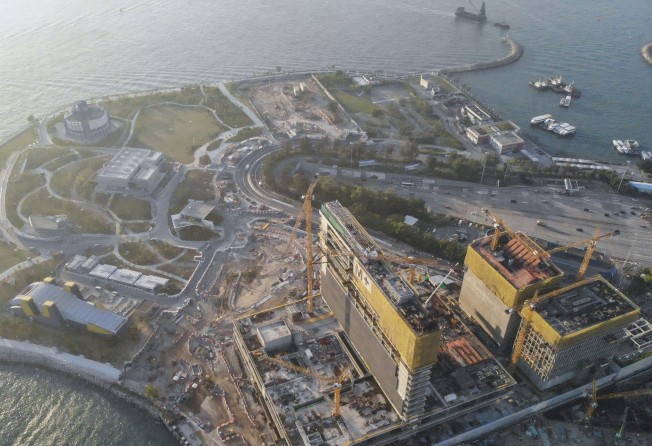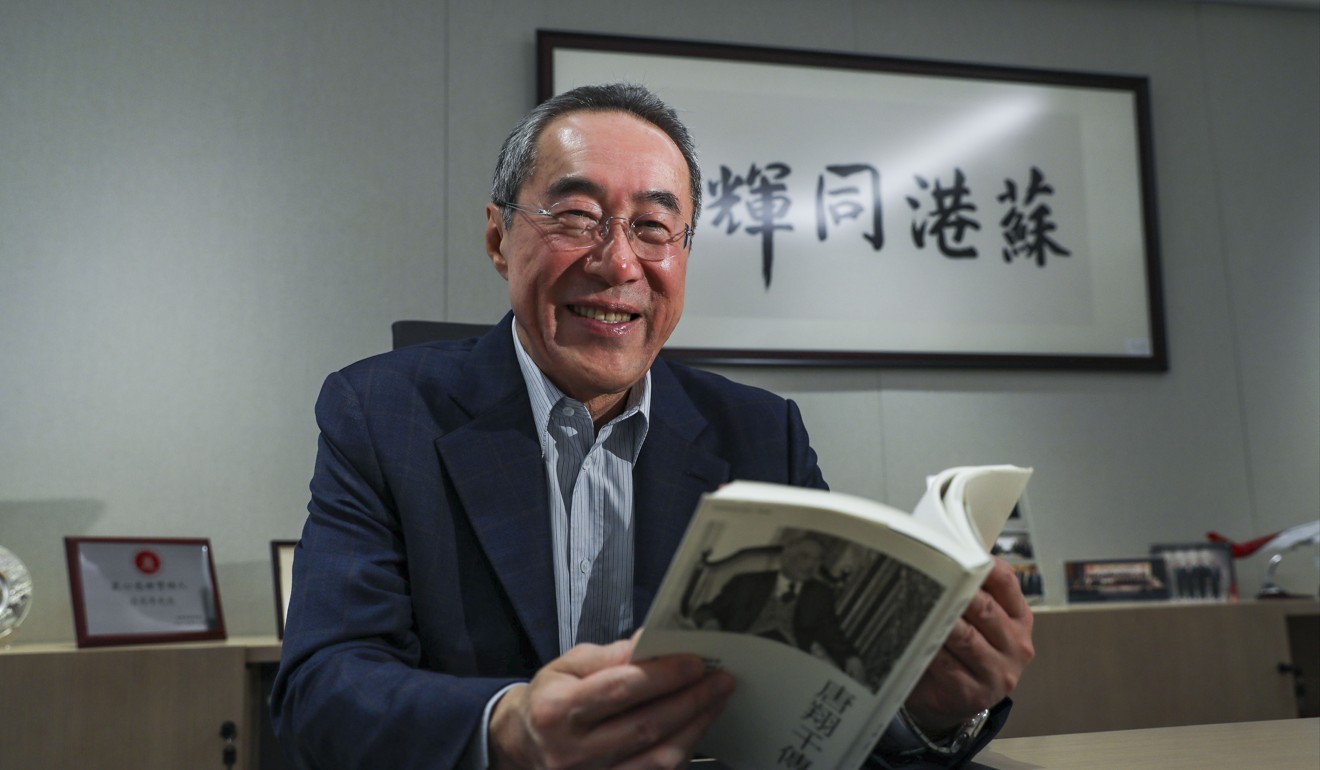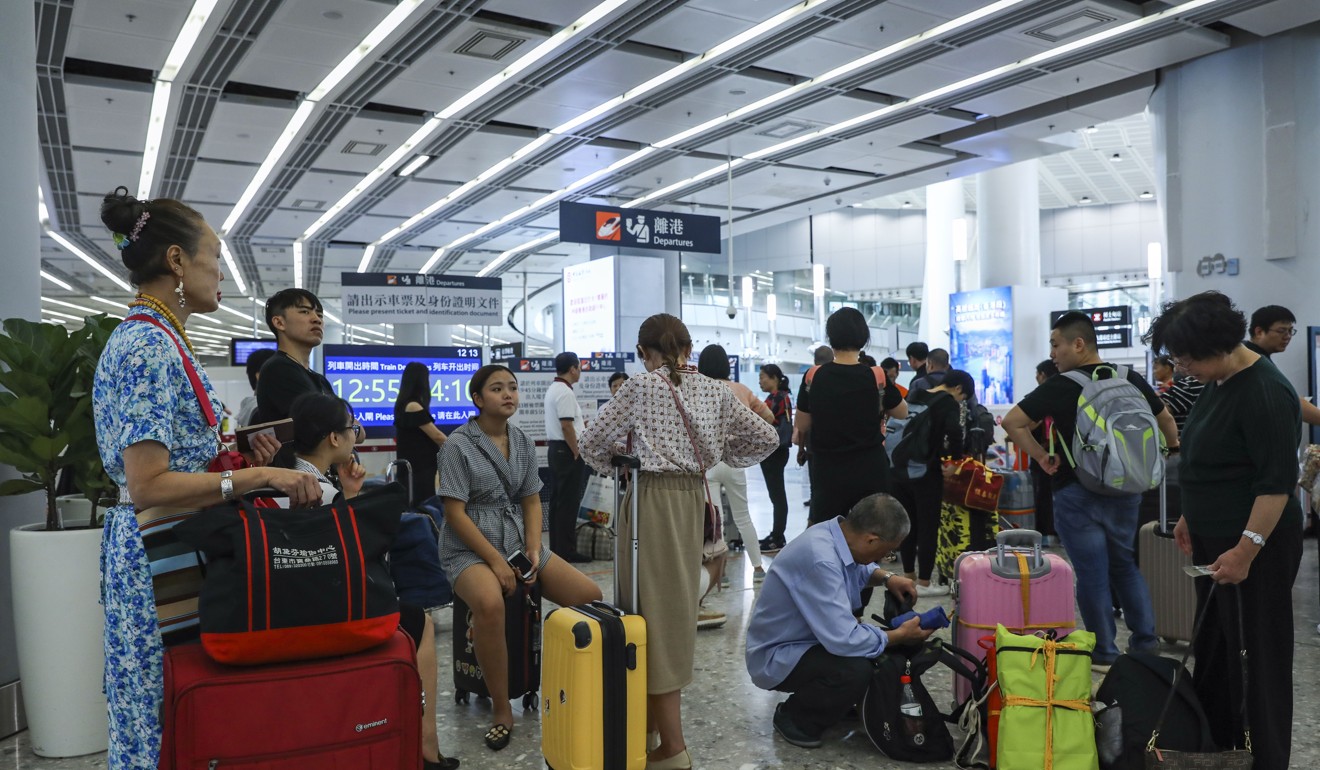West Kowloon Cultural District hopes high-speed rail link attracts visitors from mainland China to boost audience numbers
- Authority chairman Henry Tang says discussions under way with mainland railway bosses to tweak schedules and draw day trippers in
- Arts hub located a short walk from West Kowloon high-speed rail terminus

Hong Kong’s arts hub is in talks with mainland Chinese railway authorities to extend cross-border high-speed rail services to attract visitors from Guangdong province, it was revealed on Tuesday.
Henry Tang Ying-yen, chairman of the West Kowloon Cultural District Authority, shared his vision for the future development of the arts hub and how it might take advantage of the link in an interview with the Our Hong Kong Foundation – a think tank founded by former chief executive Tung Chee-hwa.
Tang said people living near cities such as Guangzhou, Zhuhai and Foshan could make a day trip to Hong Kong using the high-speed rail to watch a show at the cultural district and return the same day.
“We are discussing the possibility of delaying the last train [which currently leaves at 10.50pm] with the China Railway Corporation,” Tang said.
“Our performances could start [earlier] and finish at 10pm, so audience members can go home by train.”

The high-speed rail’s West Kowloon terminus is within walking distance of the arts hub.
A Hong Kong government source said: “We are discussing new train schedules for the high-speed rail, including later departure times. We also need to take into account the opening hours of West Kowloon station.”
A spokesman for the MTR Corporation, which operates the Hong Kong section of the link, said the company would monitor customers’ needs and work with the mainland Chinese railway authorities to make adjustments where appropriate.
Tang said the multibillion-dollar project on the West Kowloon waterfront presented a golden opportunity for Hong Kong to become a leading arts and cultural centre.
The city could follow the example of New York and London in diversifying from financial services, he said.

“They started as port cities, then broadened their scope to trade, service industries and financial services. Now, arts and culture have become an integral part of their economy.”
Tang, who served as chief secretary between 2007 and 2011, said he was confident the city’s strengths such as infrastructure, rule of law, intellectual property protection and logistics could help achieve this vision.
The Xiqu Centre, which officially opened on January 20, was the latest venue in the West Kowloon Cultural District.
Built at a cost to the public purse of HK$2.7 billion (US$356.7 million), the venue’s mission was to promote and preserve traditional Chinese opera.

Other forthcoming major facilities at the West Kowloon site are the M+ Museum of visual culture, scheduled to open this year, and the Hong Kong Palace Museum, which will display artefacts from Beijing’s museum of the same name, expected to be completed before July 1, 2022.
Tang also weighed in on one of the most controversial issues in the city.
He said there was insufficient land for residential and commercial use, as well as arts development, adding reclamation was the best solution to the city’s chronic land shortage.
“There will be people opposing reclamation. But where will the land come from?” he said.
“Everyone says they hope the government builds more flats, or provides more space for recreation, for performances and so on. We need land to meet those demands.”
Chief Executive Carrie Lam Cheng Yuet-ngor’s “Lantau Tomorrow Vision” proposal to create 1,700 hectares of land through reclamation off Lantau Island has been the subject of heated debate in Hong Kong since it was announced in her second policy address in October.